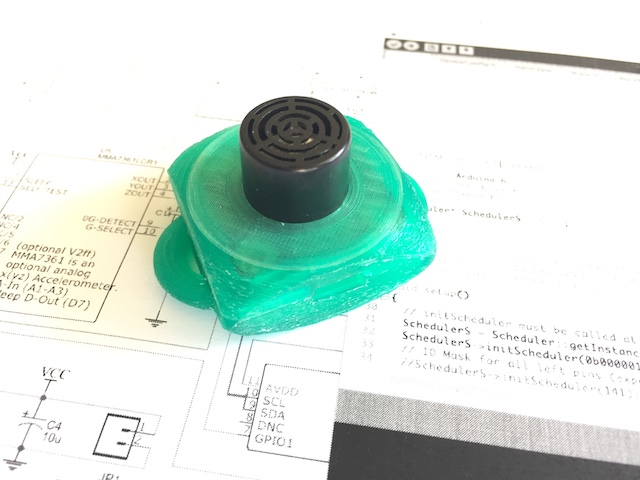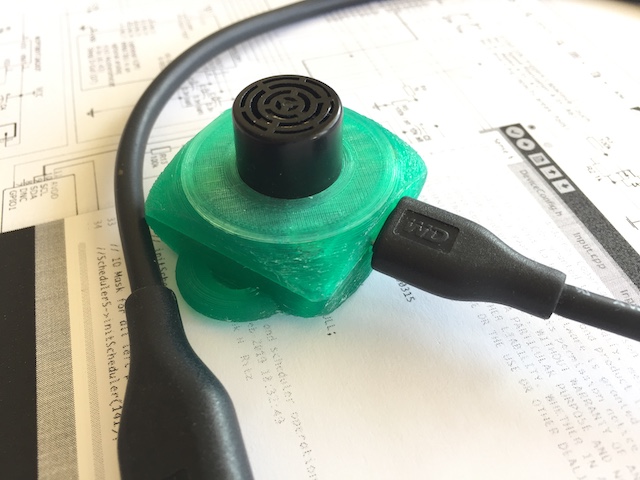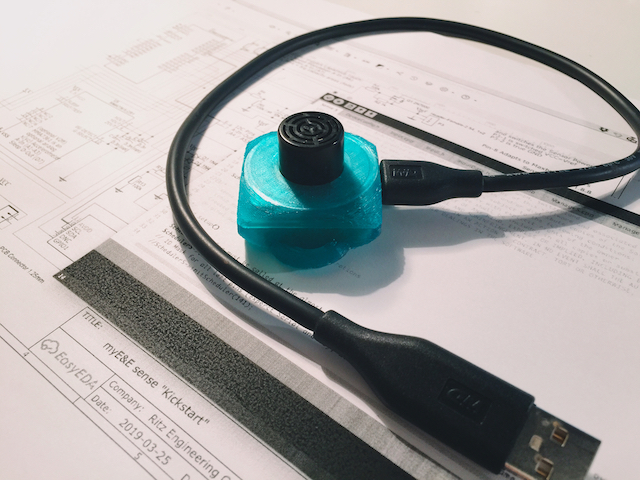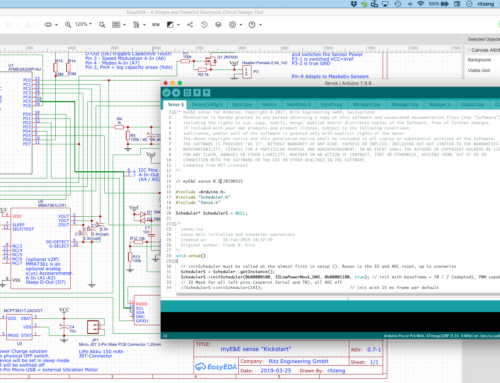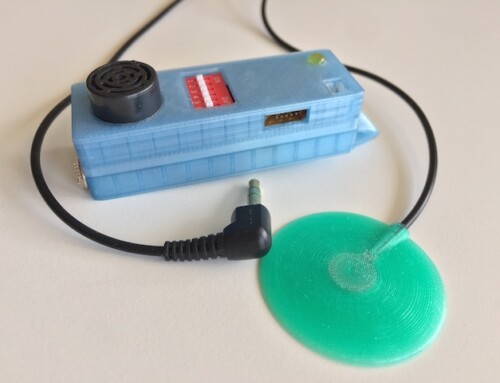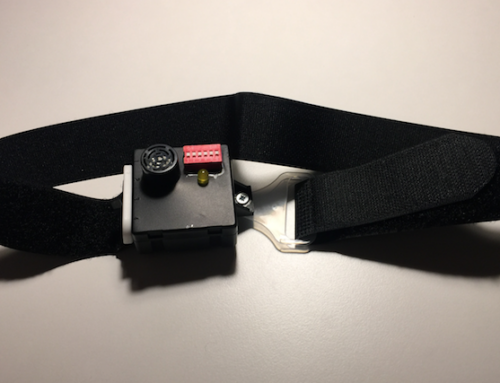myE&E sense 0.6 features
We began early to ask affected persons and their organizations about their expectations of sense. The sense features should fulfil the most important use cases of these persons. Support organizations for the visually impaired are invited to test new product versions as they become available.
Features to be tested for the PoC
Distance • Haptic • Adaption • Surveys
myE&E sense will in its 1st production Version develop a standalone solution, limited to the sonar device. Not all features for the PoC are already fullly implemented. The PoC survey of the testers will cover the following core use cases for V1.0:
- sense interprets the presence of obstacles above the white cane into tactile feedback felt on the skin as a vibration.
- sense is a transformation of sonar depth sensing of objects to time variable haptic feedback with 0.28 sec (0-1 m) to 2.8 sec (9-10 m) frequency to represent the distance.
- sense can be worn as a wearable with a clip as a headband, on the hand, on the arm or on the clothes (shirt).It scans in the direction of motion and can be used in conjunction with the white cane to improve the orientation.
- The haptic output device is built-in or can also be worn externally, connected with a very flexible supple cable, on the body (breast, neck, ear ring etc.).
- sense can be used for guidance in a short indoor and outdoor environment with a reach of less than 10 m (classified: short device). The white cane is classified as a near device (< 2 m).
- sense provides battery power for 1-2 full day use and is charged by a micro-USB port.
- sense provides a touch interface to adjust the haptic feedback characteristics (speed adjustment, intensity) about ± 50%.
Note: Wider effects of sense in terms of user experience, insurance, trust and mobility will be discussed in the next post.

